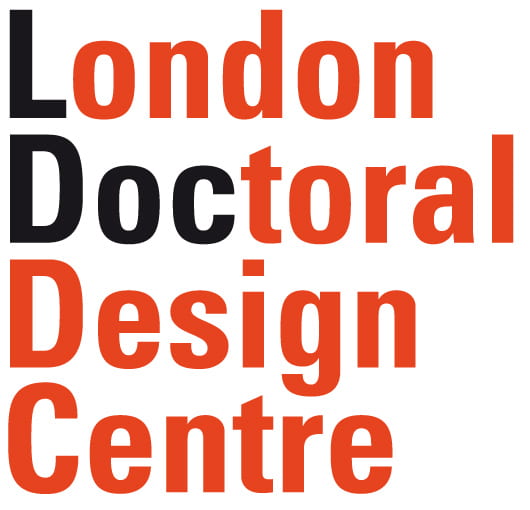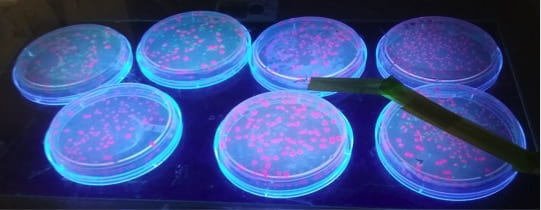During November, I received funding from the LDoc AHRC’s Student Development Fund (SDF) in order to attend the annual Biofabricate Conference, held this year at The New School: Parsons in New York. I am conducting a research-by- practice led PhD looking into growing biomaterials, biofabrication techniques in the context of fashion. Now in its third year, Biofabricate is the only design and material-centred symposium debating the issues surrounding the future of biological materials. In addition, it showcases potential future developments utilising living systems in a commercial setting for industry, and thus is an important platform to hear from the key speakers in this emerging field. Biofabricate is organised by Suzanne Lee, from New York based biofabrication company Modern Meadow, and included workshops and a Design Lab exhibiting a selection of materials fabricated from or inspired by yeast, bacteria, fungi and other biomaterials.
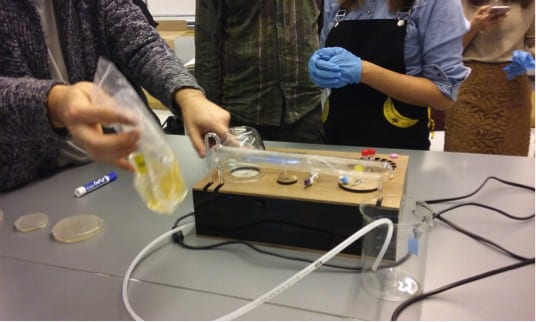
Amino Labs – Engineer Your Own Colours Workshop with Julie Leggett and Dr Justin Pahara

Amino Labs – Engineer Your Own Colours Workshop. Photo courtesy of Julie Leggett and Dr Justin Pahara
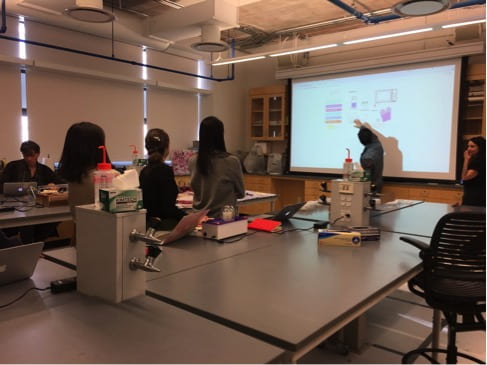
Amino Labs – Engineer Your Own Colours Workshop. Photo courtesy of Julie Leggett and Dr Justin Pahara
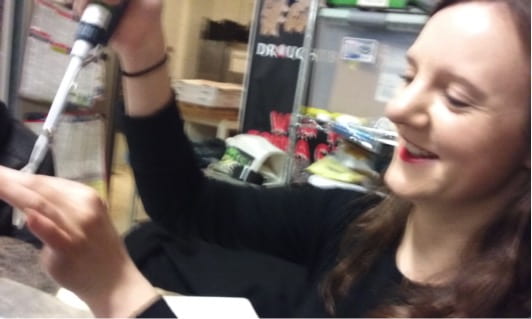
Genspace Biotechnology Crash Course with Julie Wolf and PCR night with Ellen Jorgensen
In the morning sessions, speakers including Daisy Ginsberg, Amy Congdon, Tony Dunne and Christina Agapakis introduced work principally traversing the areas of synthetic biology and design, stimulating debate and discussion both on the panel and from the audience. The afternoon introduced some of the early adopters of biofabrication using living materials within their products and companies, such as Mother Dirt, BioMASON, Mycoworks and Spiber. The conference culminated in the launch of the new Adidas Futurecraft trainer, showcasing a spun fibre made in a fermentation process using genetically modified bacteria. The synthetic spider silk is made in collaboration with AMSilk, and shows real investment into the biomaterial sector by a large industry leader. The integration of bacteria and the material for the fashion and textile was directly addressed at this conference, making it vital for my area of research.
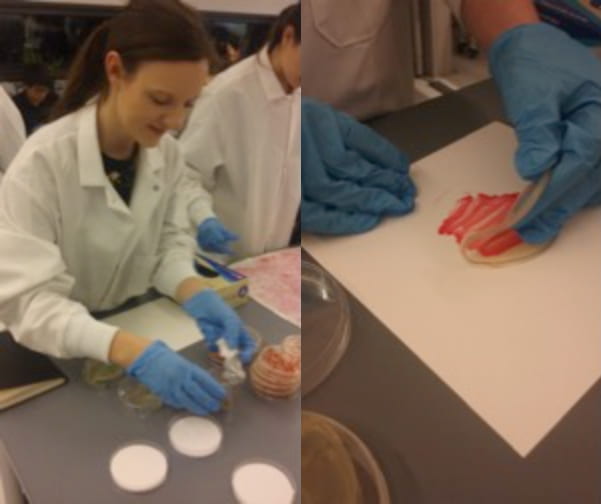
Bio art workshop printing with bacterial pigments and colours – The New School: Parsons in New York
Workshops were presented as part of the conference, and I was able to participate in the Amino Labs – Engineer Your Own Colours – workshop with Julie Leggett and Dr Justin Pahara, a Biotic Gaming workshop with Pieter from Waag Society – creating a platform game to control euglena (an organism which is both animal and plant, feeding on other organisms and sunlight), and a Bio Art workshop – printing with bacterial pigments and colours, offered by Parsons. The workshops were held in the Parsons biology laboratory, a space offering classes exploring biological dyes and opportunity to explore biology. It was a great opportunity to meet other design practitioners, start-up entrepreneurs and students interested in the area, and the workshops enabled a hands-on approach to working with bacteria in a principally art and design environment.
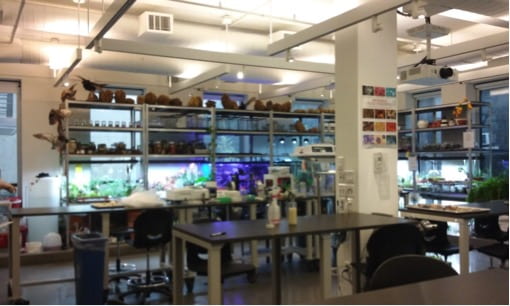
School of Visual Arts biolab and meeting with Suzanne Anker and Tarah Rhoda
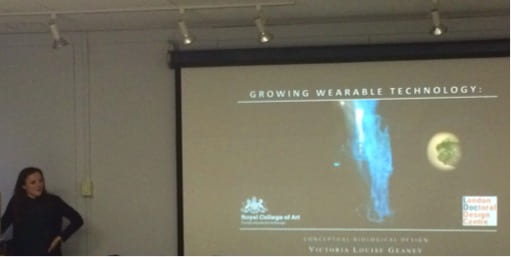
Presentation at the Fashion Institute of Technology
During my visit I had the opportunity to present to the Biodesign Challenge team at the Fashion Institute of Technology, discussing and sharing my research and practice on designing with and incorporating living systems and bacteria. I visited Genspace, a Brooklyn-based public biohacker space, and had a tour from the lab manager, and also attended a Biotechnology Crash Course with Julie Wolf, and a PCR night run by Ellen Jorgensen. I met and worked with designer Ali Schachtschneider who is looking at growing bacterial indigo dyes, during my time at Genspace. Additionally, I visited the School of Visual Arts and met with Suzanne Anker and Tarah Rhoda, who showed me around their biolab. It was also fantastic to speak to Julia Buntaine, Director of the SciArt Center about her work with the centre, magazine and further research into science and art. In Boston, I spent time at the MIT Media Lab, visited the Wyss Institute, Ginkgo Bioworks and met with Dr George Church of Harvard University.
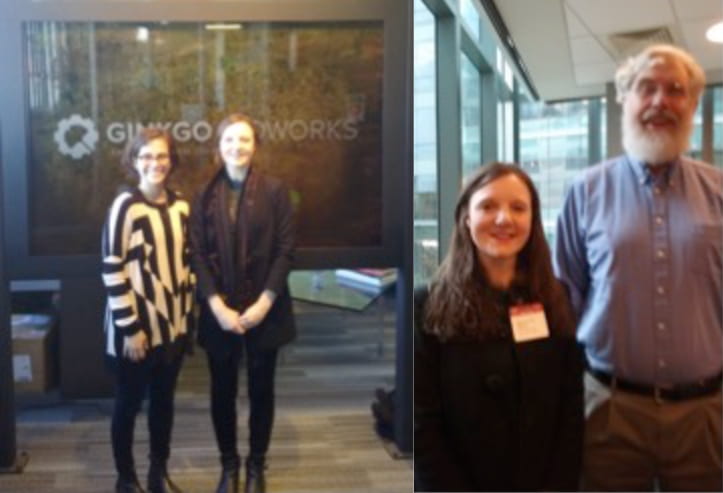
Left: Visit to Ginkgo Bioworks, meeting with Christina Agapakis. Right: Meeting Dr George Church, Harvard University
Overall, Biofabricate conference and this research trip allowed me a real insight into the current status of biotechnology within the design and manufacturing fields. The chance to visit the conference in New York and the laboratories in Boston has led to some really interesting opportunities and possible potential collaborations and I am incredibly grateful to LDoc and the AHRC. I have learnt so much through meeting key inspirational experts and immersing myself into the thriving bio-communities in New York and Boston, and through discussing ideas and shared research interests and areas together. This research trip has greatly aided my study including strengthening my ideas regarding my own practice, and has opened up new and interesting future prospects.
Victoria Geaney
